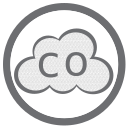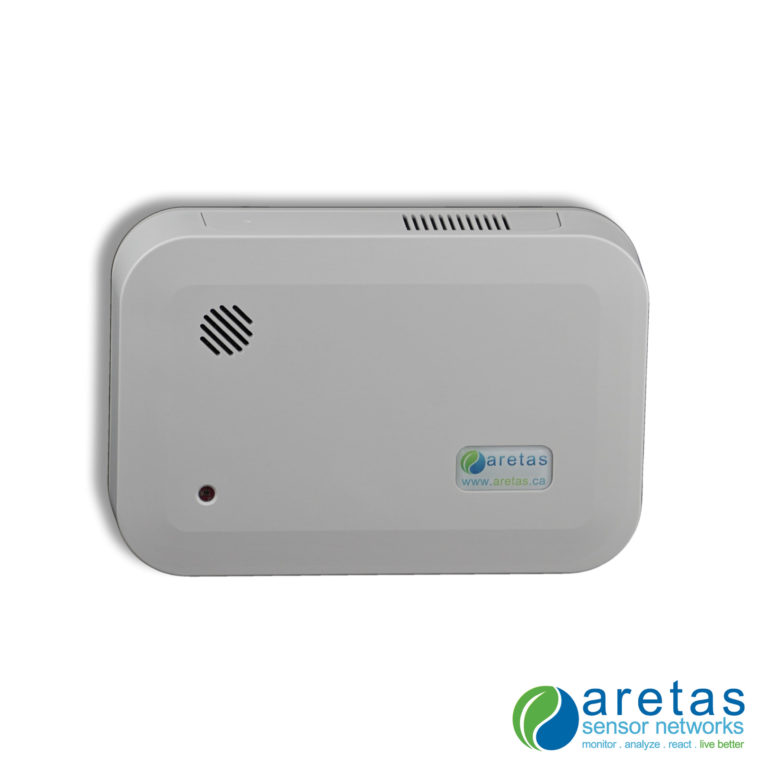What and why we monitor
these are some of the 35+ variables that aretas can monitor for you and the reasons why

Temperature and Relative Humdity
Several northern European studies have suggested that temperatures exceeding 23°C indoors can lead to an exacerbation of the symptoms of sick building syndrome.
Maintaining ideal relative humidity indoors is important. Low humidity can lead to symptoms such as dry eyes and throat, and skin irritation, while high relative humidity makes it easier for molds to reproduce.

Carbon Monoxide (CO)
Carbon monoxide (CO) is tasteless, odorless, colorless, and non-irritating toxic gas that is most commonly produced by the combustion of fuels. Exposure can cause symptoms such as headaches, dizziness, and nausea. High levels can cause unconsciousness and even death. Exposure to moderate and high levels of CO over long periods of time has also been linked with increased risk of heart disease. ASHRAE ( American Society of Heating, Refrigerating, and Air-Conditioning Engineers) recommends that levels for indoor environments should generally not exceed 5 ppm.

Volatile Organic Compounds VOCs
VOCs include a variety of chemicals, many of which may have adverse health effects. Concentrations of many VOCs are consistently higher indoors than outdoors. Exposure to VOCs can lead to symptoms including eye, nose and throat irritation, headaches, nausea, dizziness, and skin irritation. Higher concentrations may cause irritation of the lung and damage to the nervous system, kidneys, and liver.

Carbon Dioxide (CO2)
As the concentration CO2 in air rises, symptoms such as dizziness, sleepiness, confusion, headaches, and blurred vision can occur. A 2012 Berkeley Labs study found that high CO2 levels in Classrooms can significantly impair decision making performance. Significant reductions in decision making were found at levels exceeding 1000 parts per million, and large reductions were found at 2500 ppm. Classrooms in the study frequently exceeded 1000 ppm, and occasionally exceeded 3000 ppm.

Particulate Matter (PM)
Particulate matter from sources such as stoves, burning candles, cigarette smoking, dust, aerosols, and printer toner can be hazardous to human health. Small particulates less than 10 micrometers in diameter are the most concerning, as they can be inhaled and enter the lungs. Some may even enter the bloodstream. Scientific studies have linked PM exposure to a variety of health impacts, including eye, nose and throat irritation, increased hospital and ER visits, aggravation of respiratory and coronary disease symptoms, and increased mortality rates.

Nitrogen Dioxide (NO2)
The main source of Nitrogen Dioxide (NO2) is from the burning of fossil fuels such as coal, oil and gas. Most of the nitrogen dioxide in cities is produced from motor vehicle exhaust. Exposure can aggravate respiratory diseases such as asthma, leading to an increase in hospital admissions. Long-term exposure to elevated NO2 concentrations may contribute to the development of asthma and increase the risk of developing respiratory infections.

Ozone (O3)
Long-term exposure to ozone is linked to exacerbation of asthma, and is likely to be one of the causes of asthma development. Long-term exposures to high concentrations of ozone may also be linked to permanent lung damage. The effects are more pronounced in children since their lungs are still developing.

Light Spectrum
Contemporary research is discovering that light spectrum can affect our mood and sleeping patterns. Light spectrum plays an important role in regulating circadian rhythms. Blue light at night, for example, suppresses melatonin production significantly. Harvard researchers found that over a 6.5 hour period, blue light suppressed melatonin for twice as long as green light and shifted circadian rhythms by twice as much as the green light (3 hours vs. 1.5 hours). The green light and blue light were of the same brightness.

Noise (SPL)
Noise exceeding certain thresholds (even in the home) can damage your hearing permanently. In addition to being dangerous, excessive exposure to loud sounds is distracting and negatively affects productivity. Additionally, noise spectral content is important for several reasons; one of which is helping isolate problematic sources of noise and understanding the composition of noise.

